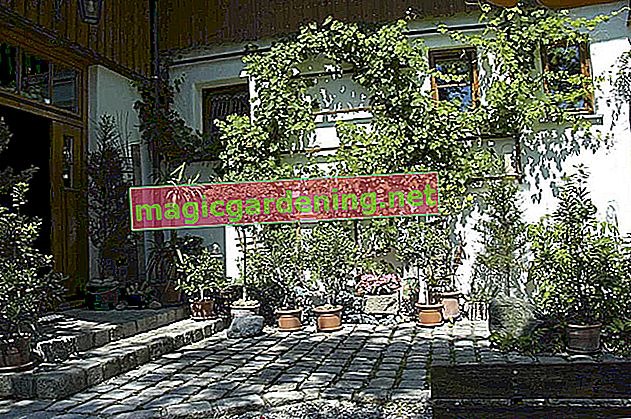
Climbing hydrangea, Hydrangea petiolaris
Hydrangea petiolaris originally comes from Japan and China, but has also been used in Germany for many years to green house walls, old trees, pergolas, etc. The undemanding and robust plant is also suitable as a ground cover due to its growth. The plate-shaped flowers are always creamy white and show a wreath of a few sterile petals, with the flat center composed of numerous fertile flowers. When young, the climbing hydrangea is sometimes a little lazy.
also read
- Cutting the climbing hydrangea is not absolutely necessary
- Brown leaves on the climbing hydrangea often indicate sunburn
- Plant robust climbing hydrangeas
Hydrangea petiolaris - the most beautiful varieties
In Germany, different varieties of the climbing hydrangea Hydrangea petiolaris are not (yet?) Too widespread. Basically only four varieties are known in this country, although this type of hydrangea is of course much more diverse. In the garden-loving Great Britain, for example, distinctive breeds such as “Summer Snow” or “Firefly” can be admired.
| variety | Flower color | Heyday | leaves | Stature | Width | features |
|---|---|---|---|---|---|---|
| Miranda | creamy white | June to July | varnished yellow | about 3 meters | about 3 meters | large flowers |
| Cordifolia | creamy white | June to July | deciduous, heart-shaped | approx. 60 centimeters / on walls up to 3 meters | about 40 centimeters | Dwarf form |
| Semiola | White | May to June | evergreen | about 250 centimeters | about 3 meters | New breed |
| Silver lining | White | July to August | variegated white-green | about 1.5 to 2 meters | about 1.5 to 2 meters | well suited for buckets |
Sham hydrangea Schizophragma hydrangeoides
The false or split hydrangea is closely related to the climbing hydrangea, with the main difference only in the shape of the petals. The plate-shaped, also cream-white flowers have a wreath of a few sterile petals and a flat center of numerous fertile flowers. In contrast to the “real” climbing hydrangea, the pseudo-flowers are heart-shaped and sit individually on the flower stalks. With the climbing hydrangea, on the other hand, three to four sit together. The false hydrangea is as robust as it is undemanding and thrives excellently in partially shaded to shady locations.
Tips & Tricks
Both climbing hydrangeas should be planted in a partially shaded to shady location if possible. A sunny spot only makes sense in very moist, deep soils, although south-facing locations are unsuitable.







